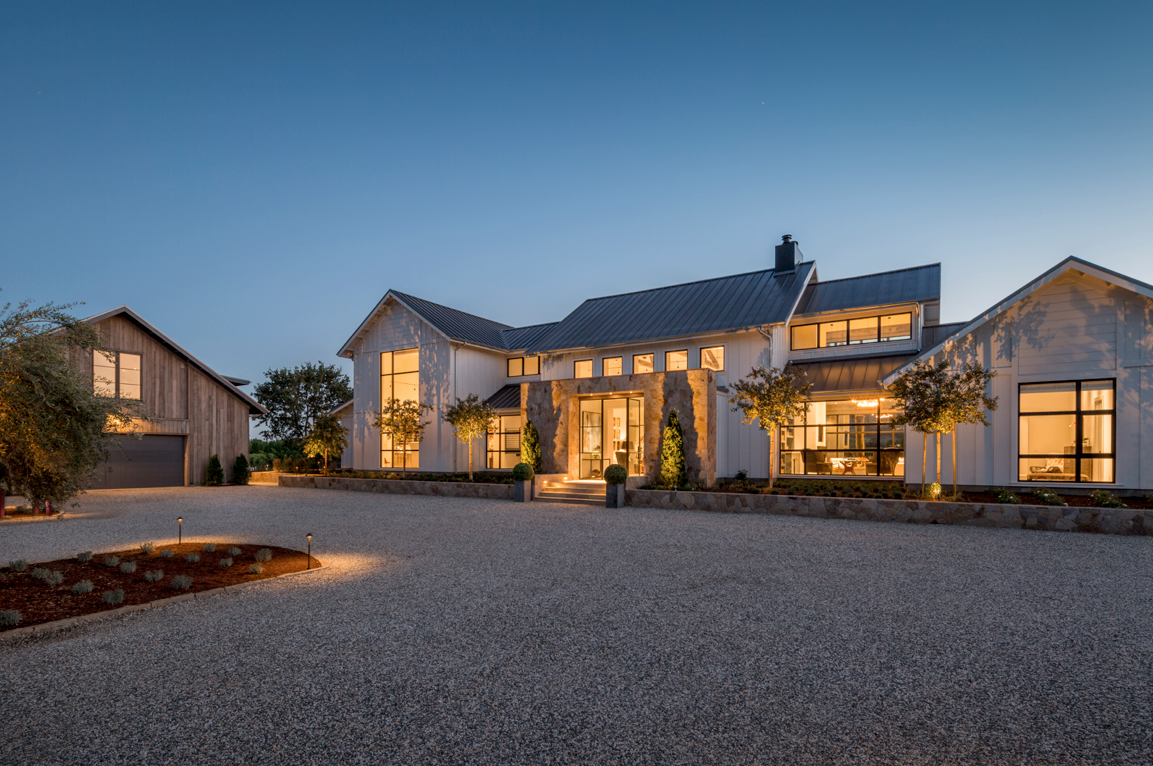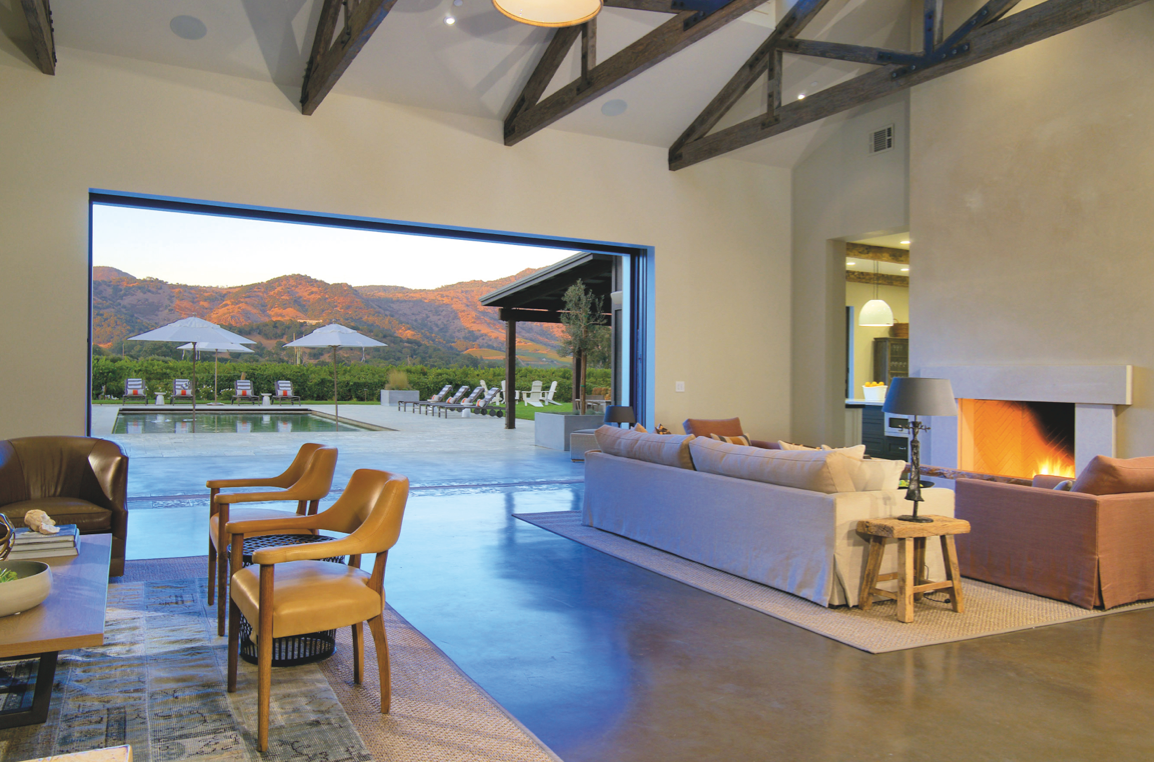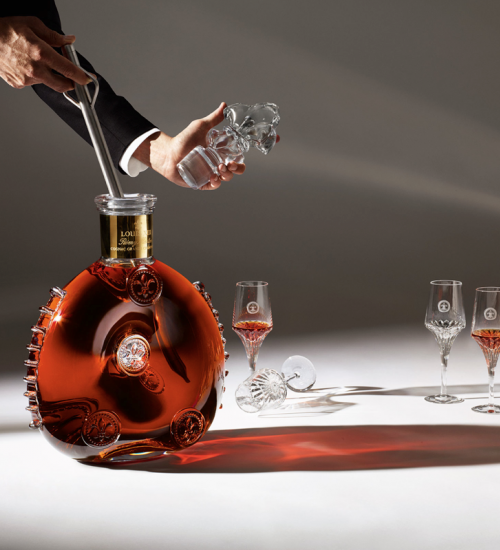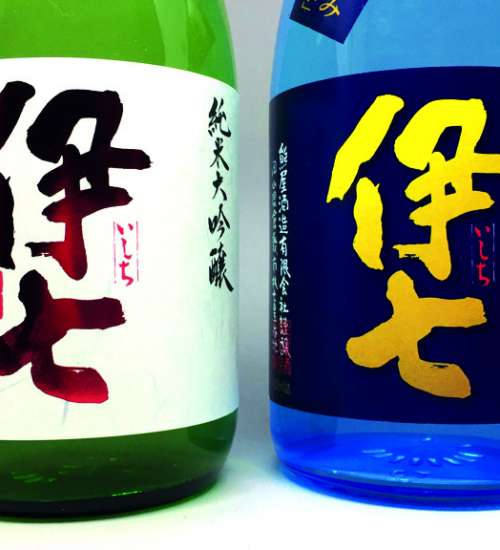Napa Valley in California is known more for its complex Cabernets than its cutting-edge real estate, but in recent years, a number of developers have returned to the area’s architectural vernacular, giving the turn-of-the-century farmhouse a contemporary twist.
Architect Howard Backen was an early frontrunner. His affinity for the farm buildings that still dot the outer Bay Area landscape—rather than the imported chateau-style castles—is reflected in his firm’s extensive portfolio of private residences and upscale wineries. From a distance, many of them resemble well-kept farmhouses.
Since 2010, local Napa developers MJC have established their own interpretation of the modern homestead by building a series of multi-million-dollar spec homes. Their latest, The Cunningham, spans 10,000 square feet and has concrete floors and a pitched roof arranged around a central courtyard and saltwater pool. The residence is luxurious, no doubt, but also distinctly barn-like.
“It’s supposed to feel like a turn-of-the-century farmhouse,” says Matthew Cook, a partner at MJC Development. “It was built with the same local wood, stone and steel.”
Despite being just 30 miles long and a few miles wide, California’s Napa Valley has become known worldwide as a leading wine-producing region, and over the last decade, its real estate market has also experienced a boom. The region’s housing market benefits from its proximity to San Francisco’s robust job market and from a tight supply of homes available for sale and rent. Since 2012, Napa Valley home values have increased by 57 per cent.
MJC sold its first property to Gary Friedman, CEO of the upscale home goods brand Restoration Hardware for US$9.5 million (they also showed the property to Kevin Systrom, cofounder of Instagram). The Cunningham, which is listed for US$14 million, targets affluent buyers seeking a hassle free second home in wine country. Since the house is designed turnkey, the owner can move in with not much more than a toothbrush.
Creating a spec home that comes with everything from furniture to art pieces is a tremendous task and presents a unique set of design challenges. The foremost, according to interior designer Jennifer Nagle, is making a space that is architecturally large feel like a home. “With a home like this you’re basically appealing to a buyer’s psyche,” she says. “You want them to say ‘yes’ I could see my self living here.”
The team starts with how the property is positioned and will spend hours walking the land and vetting the lot for the perspectives it affords. Allowing the views to direct the design of the house is vital, says Nagle. “The full sweeping views of the mountains and being able to capture the incredible sunlight that comes at the end of the day. It’s very important. You are capturing the essence of the valley.”
Today the completed home captures views from its many frameless windows. In the master bedroom a large west-facing window slides open fully, bringing the vivid green surroundings into the room. In the master bath, the tub faces a landscape of vines. Every where you look, on the top of the staircase, at the end of the hallway, slabs of blue sky and rustling leaves are in the line of sight.
“Any room you’re in can be inside or outside,” says Matthew Cook. “Our homes are really about bringing the indoor out and the outdoors in.” This blending is also incorporated functionally. A fully equipped outdoor kitchen is situated beside the pool, as is a dining table that overlooks the vineyards. There is also an outdoor breezeway dividing the guest wing from the rest of the property. It frames a grove of silvery olive trees and has a giant farm table great for tasting different wines right off the vineyard.
For the vast interior spaces Jennifer Nagle lime-washed the walls to add textural warmth and added area rugs, lighting and punches of color. Her furniture selections range from larger ‘foundation’ pieces acquired at fairs around the country to locally found items such as vintage crystal and benches she had re-upholstered. At times the scale of the home can still be overwhelming -- from the front entrance the soaring structure appears more like a clubhouse than a residence. It also lacks old growth oak trees that offer cool shading on hot summer days, but this is par for the course with a new-build project.
The property does come with three acres of planted Chardonnay. Currently, the owners lease the grapes to a local farmer who cultivates and produces the wine and they receive a percentage of the profits. The buyer can continue this arrangement, or if they like, they can even start their own label. Alternatively, they can simply relax, select a bottle of wine from the temperature-controlled wine cellar and enjoy the sunset views from the Great Room or the poolside courtyard. Much like a fine vintage, with a little time and love from its future owners, this modern farmhouse will find its perfect balance.














 Back
Back
